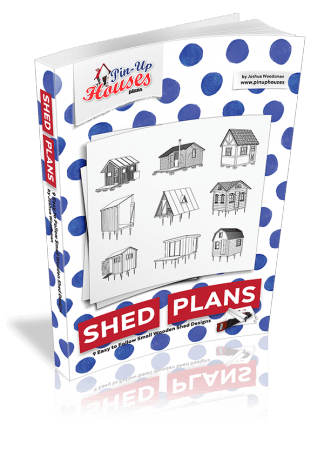Why Renovations Can Be a Double-Edged Sword
When the time comes to sell a home, most homeowners start thinking about ways to make their property stand out. Fresh paint, modern finishes, and small upgrades can certainly boost a home’s appeal. However, the excitement of adding value often turns into a trap when homeowners decide to take on do-it-yourself renovations. While DIY work can save money upfront, it can also create complications that lower the home’s value, extend the time on the market, or even scare off potential buyers entirely.
The problem lies not in the idea of renovation itself, but in the execution. Buyers today are more informed and discerning than ever. They notice mismatched tiles, uneven drywall seams, or shortcuts taken on plumbing and electrical work. What feels like a “quick upgrade” to a seller often looks like “future repairs” to a buyer. The end result? Less trust, lower offers, and a tougher selling process.
The Illusion of Saving Money
One of the most common reasons homeowners attempt DIY renovations before selling is the hope of saving money. Hiring contractors can be expensive, and watching online tutorials makes projects seem manageable. Yet what often gets overlooked is the hidden cost of mistakes.
A poorly installed floor might need to be ripped up and replaced entirely by the next owner. Crooked cabinets or uneven paint lines may not seem like a big deal to the person doing the work, but they can leave a lasting impression of sloppiness on buyers. Worse, if a project touches major systems like plumbing, electrical wiring, or structural work mistakes can lead to safety issues, inspection failures, and expensive repairs demanded during negotiations.
In this sense, DIY work sometimes ends up being more costly than hiring professionals from the start. A buyer’s inspector will almost always notice where corners were cut, and once those issues are on the inspection report, they become leverage for buyers to lower their offers.
Overpersonalization and Taste Gaps
Another subtle mistake homeowners make when renovating before selling is designing for their own tastes rather than broad market appeal. It’s tempting to pick bold paint colors, trendy tiles, or unusual fixtures that reflect personal style. However, what excites the homeowner may alienate potential buyers.
For instance, a bright red kitchen backsplash might feel modern and unique to one person, but to a buyer trying to imagine their own life in the home, it feels like a future project to “fix.” Neutral colors, timeless finishes, and clean lines tend to sell better because they allow buyers to picture their own furniture, artwork, and personality in the space. Overly personalized design choices, even when executed flawlessly, can actually reduce buyer interest and slow down the selling process.
Ignoring Proper Permits
DIY renovations often skip a critical step: securing permits for major changes. Whether it’s adding a deck, finishing a basement, or altering a plumbing system, many renovations legally require approval from local authorities. Homeowners sometimes assume that if the work is done quietly and looks “good enough,” no one will notice. But buyers and inspectors will.
When unpermitted work is discovered, it raises red flags. Buyers may worry about safety, code compliance, or future fines. In many cases, they’ll either walk away or demand a significant price reduction. Unpermitted renovations can even derail a sale entirely if lenders refuse to finance a home with questionable improvements.
It’s not just about paperwork it’s about credibility. Buyers want to know they’re purchasing a safe, legal, and properly maintained property. Cutting corners on permits undermines that trust.
The Problem of Partial Projects
Another common scenario involves homeowners starting renovations but failing to finish them before listing. A bathroom with half-installed tile, a kitchen missing cabinet doors, or a deck with exposed framework sends one message to buyers: this home is unfinished.
While the seller may believe buyers can “just imagine” the completed project, most buyers don’t want to purchase a work in progress. They see unfinished projects as added expense, time, and hassle. Even small incomplete details can overshadow an otherwise solid home. A missing baseboard or an unpainted patch of wall can make buyers question what other corners were cut behind the scenes.
If a project cannot be completed properly before listing, it may be better not to start it at all. A clean, dated room often looks better than a half-done remodel that highlights flaws.
Hidden Structural and Safety Risks
Perhaps the most serious mistake DIY renovators make is underestimating the complexity of structural, electrical, and plumbing work. While cosmetic fixes like painting or replacing cabinet hardware are fairly safe, anything deeper carries risks.
DIY electrical work, for example, might function in the short term but could pose fire hazards. Plumbing mistakes can cause leaks that damage floors, walls, and foundations. Structural errors, such as improperly removing a load-bearing wall, may compromise the stability of the home. Even if these issues don’t surface before the sale, they can lead to liability for the seller if discovered later.
Buyers today often hire thorough inspectors who test outlets, check water pressure, and evaluate framing. If DIY shortcuts are discovered, the buyer’s trust erodes quickly, and their willingness to pay top dollar disappears with it.
The Trap of Over-Renovation
Not every renovation pays off in the resale market. Some homeowners pour money and effort into upgrades that won’t actually increase the home’s value. Installing a luxury spa shower, high-end countertops, or custom built-ins may feel like a smart move, but buyers may not be willing to pay extra for features that go beyond the neighborhood standard.
Over-renovation also creates a mismatch between the home and its surroundings. A home with a $50,000 kitchen remodel may still sit unsold if comparable homes in the area sell with simpler updates. In this case, the homeowner has spent more than they can reasonably expect to recover.
Smart renovations are about balance improving appeal without overshooting the expectations of the target buyer pool. That requires understanding the local market, which is why consulting real estate professionals can make all the difference.
How Buyers Perceive DIY Work
From the buyer’s perspective, DIY renovations can feel risky. Even if a home looks attractive in photos, walking through in person reveals small imperfections. Crooked tiles, squeaky floors, or poorly aligned doors all suggest inexperience. Buyers may then wonder what else is hidden if the visible work is flawed, are the hidden systems in trouble too?
This perception can create a domino effect: fewer offers, lower bids, and longer time on the market. Many buyers prefer to purchase a home that’s slightly outdated but well-maintained rather than one that’s been freshly renovated by amateurs. Reliability and trust often matter more than shiny new finishes.
In fact, professional home buyers such as Columbia house buyers often encounter properties where DIY renovations backfire. Instead of adding value, the work lowers the home’s overall desirability, leaving sellers frustrated. In such cases, professional buyers can still provide fair offers, but homeowners rarely recoup what they spent on misguided projects.
The Role of Professionals
The biggest difference between DIY and professional renovations lies in accountability. Licensed contractors follow building codes, secure permits, and bring years of expertise to their work. Their results not only look better but also pass inspections and reassure buyers. While the upfront cost of hiring professionals may feel daunting, the long-term payoff is often higher. Homes renovated properly sell faster, face fewer inspection issues, and command stronger offers.
For homeowners determined to maximize their sale, the wisest approach is to focus on projects within their skill level like painting, landscaping, or minor cosmetic updates while leaving complex work to experts. This combination saves money without sacrificing quality.
Preparing a Home to Sell Without Costly Mistakes
At the end of the day, the goal of pre-sale renovation is to make a home more attractive and market-ready. That doesn’t always mean a full remodel. Sometimes, simple cleaning, decluttering, and minor touch-ups make the biggest impact. Fresh paint in neutral colors, improved lighting, and a deep clean often do more to impress buyers than elaborate but risky DIY projects.
The key is to approach renovations with strategy, not emotion. Ask: What are buyers in this market actually looking for? What projects can realistically be completed to a high standard? Which improvements will provide the best return on investment? By answering these questions honestly, homeowners can avoid costly missteps.
Conclusion: Think Twice Before You Grab the Toolbox
DIY renovation before selling can feel empowering, but it’s also one of the easiest ways to unintentionally hurt a home’s market potential. From skipping permits to overpersonalizing design choices, the common mistakes often come down to underestimating how buyers perceive quality and risk.
Homeowners don’t need to transform their property into a showpiece; they need to present a clean, functional, and inviting space that buyers can trust. By focusing on the basics, avoiding overreach, and knowing when to call in professionals, sellers can achieve stronger results without sabotaging their own efforts.








